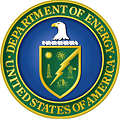-
Richard P. Feynman Center for Innovation
-
Los Alamos Collaboration for Explosives Detection (LACED)
-
SensorNexus
-
Exascale Computing Project (ECP)
-
User Facilities
- Center for Integrated Nanotechnologies (CINT)
- Los Alamos Neutron Science Center (LANSCE)
- National High Magnetic Field Laboratory (NHMFL)
-
Biosurveillance Gateway
-
Pathogen Databases
-
Community Commitment
- Giving Campaigns, Drives
- Economic Development
- Employee Funded Scholarships
- Grants and Sponsorships
- Science Columns »
- Archive
Science Column Archive
Science Columns
NEWSROOM
- Feature Stories
- News Releases
- Science Briefs
- Science Columns
- Publications
- Social Media
- Videos
- Photos
- Fast Facts
Fast Facts
Total employees: 11,956
Triad National Security, LLC: 8,327
Centerra Group, LLC Los Alamos (Guard Force): 298
Compa, Staff and support contractors: 513
Students: 1,368
Unionized craft workers: 1,050
Post doctoral researchers: 400
Located 35 miles northwest of Santa Fe, New Mexico, on 34.7 square miles of DOE-owned property.
1,280 individual facilities, including 47 technical areas with 9 million square feet under roof.
Replacement value of $14.2 billion
FY17:
63% Weapons programs
10% Nonproliferation programs
4% Safeguards and Security
7% Environmental Management
4% DOE Office of Science
3% Energy and other programs
9% Work for Others
Triad and students only
37% of employees live in Los Alamos, the remainder commute from Santa Fe, Española, Taos and Albuquerque.
Average Age: 43.5
64% male, 36% female
44% minorities
64% university degrees
27% hold undergraduate degrees
19% hold master’s degrees
18% have earned a PhD
145 R&D100 awards
34 E.O. Lawrence Awards
9 Presidential Early Career Awards
3 Glenn Seaborg Medals
Edward Teller Medal
Nobel Prize in Physics, Frederick Reines
Albuquerque to Los Alamos, NM
98 miles; 1 hr, 51 min.
Driving directions
Click to larger view
As of Dec. 6, 2018
-

Finding new ways to keep the land alive
A team at Los Alamos is using computers to model how the land is impacted by changes in temperature and precipitation, taking into account elevation, soil data, geology, vegetation and other factors - 8/2/20
-

At Los Alamos, making science fiction a reality
The Los Alamos team targeted two areas, improving bioplastics manufacturing and on-demand vaccine development - 8/2/20
-

New Mars rover, with LANL components, to search for life
Its primary and unique purpose is to collect samples that a future spacecraft can return to Earth - 7/19/20
-
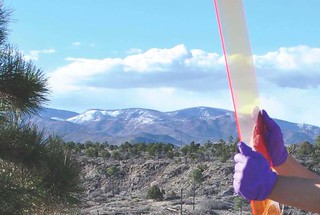
Low-cost quantum dot windows could power a solar future
A team at Los Alamos National Laboratory has developed a technique for depositing a layer of a fluorescent material on the glass surface - 6/21/20
-
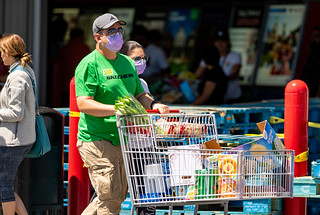
Disease outbreaks happen all the time, but...
The scientific community is working overtime to understand the virus and mitigate its impacts - 4/11/20
-

AI pinpoints renewable energy resources
All across New Mexico, a powerful energy source seethes in the Earth’s solid crust - 4/5/20
-

Expedition drifts in the Arctic ice to study climate
The Los Alamos team supports the Department of Energy’s Atmospheric Radiation Measurement user facility, which provides the research community with observations of Earth’s atmosphere - 2/16/20
-
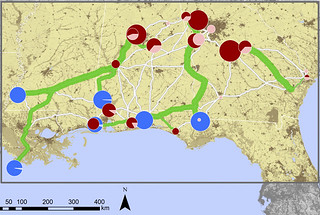
Carbon capture: Solved by software?
The approach of burying CO2 emissions deep underground has struggled to be economically viable, but that could be changing - 1/23/20
-

Unraveling the mysteries of the tiniest living things
The Department of Energy’s Office of Biological and Environmental Research has provided $10 million to establish a National Microbiome Data Collaborative - 11/24/19
-
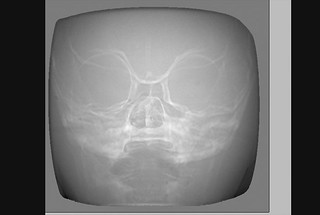
Precise proton beam takes aim at cancer
Using new technology, oncologists create images of tumors during treatment, enabling greater precision without harming healthy tissue - 11/10/19
-
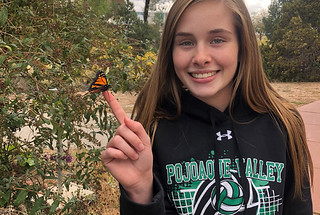
LANL protects milkweed to preserve monarchs
A Los Alamos team has been documenting the cycles and seasons of monarch butterflies and the location of milkweed on Laboratory property - 10/27/19
-

At LANL, breaking down data to address global problems
The ability to collect information far outpaces the ability to fully utilize it—yet that information may hold the key to solving some of the biggest global challenges facing the world today. - 10/13/19
-

Making a material difference
Researchers at Los Alamos National Laboratory’s Sigma Complex apply fundamental science and research to take this advanced manufacturing to an even higher level - 9/22/19
-

Beetles and piñons shed light on world’s ecology
Researchers are now including beetle population dynamics in Earth-system models alongside water cycles, temperature fluctuations, vegetation dynamics and other global and local factors - 9/15/19
-

Welcome to nuclear inspector school
Inspectors go through training at Los Alamos National Laboratory, in one of the laboratory’s nuclear facilities, as part of their requirements to become qualified inspectors. - 9/1/19
-

A missing link in predicting hurricane damage
Eroding coastlines play a significant role in how infrastructure will be affected—but a new computer model now factors them in - 8/30/19
-

Fighting wildfires with computer models
Prescribed burns can remove excess fuel from the forest floor, and algorithms can help fire crews know where to set them - 8/27/19
-

Preparing the quantum workforce of the future
The Quantum Computing Summer School accepts students from all over the world to receive tutorials from quantum-computation experts and gain hands-on experience and one-to-one mentoring - 8/11/19
-

Did life sign the guestbook on Mars?
If life exists on Mars, it still hasn’t showed itself, but recent evidence from the red planet increasingly supports the possibility - 7/18/19
-
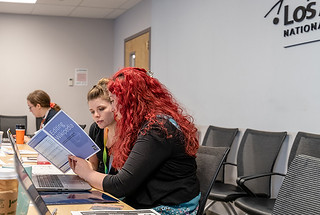
Los Alamos scientists school Wikipedia about women in science
A group of Lab employees gathered to create or edit biographies of Los Alamos female scientists on Wikipedia - 7/13/19
-

Using algae to try and solve the plastic problem
Scientists at Los Alamos National Laboratory have developed an alternative method to sustainably manufacture plastic that is not only durable but is easily biodegradable - 7/8/19
-

The problem with quantum computers
It’s called decoherence—but while a breakthrough solution seems years away, there are ways of getting around it - 6/10/19
-

Reaping the unexpected dividends of space exploration
Space science has likewise yielded unexpected discoveries and unintended applications — some at Los Alamos National Laboratory - 6/10/19
-

You can’t see it, but it’s 200+ times stronger than steel
Atomic armor coating extends the lifetime of devices by making them much more rugged in even the most extreme environments. - 6/2/19
-

Basic quantum research will transform science, industry
All most people hear about is quantum computing, but that's hardly the whole story - 5/17/19
-

Helping health workers understand unfolding disease outbreaks
This is the plan for a web-based disease-outbreak tool developed at Los Alamos, a quick analysis resource called AIDO (“I-do”) for Analytics for Investigation of Disease Outbreaks. - 4/28/19
-

The hidden seismic symphony in earthquake signals
Machine learning can reveal acoustic vibrations that could improve forecasting - 4/25/19
-

Unlocking secrets about the origin of the universe
Los Alamos researchers are contributing to the project by designing an advanced tracking detector based on a new type of sensor system called MAPS - 4/15/19
-

How big data can help save the world
Emerging analytic and computing tools are enabling much better use of huge data sets - 3/27/19
-

New system to check for dangerous natural gas leaks
A team from Los Alamos National Laboratory, Aeris Technology and Rice University has developed the Autonomous, Low- cost, Fast Leak Detection System (ALFaLDS) to detect, locate and quantify leaks quickly, safely and inexpensively. - 3/24/19
-

Healthy forests depend on balancing fire and water
To unravel exactly how fire influences moisture in burned soil, hydrologists and other environmental scientists at Los Alamos National Laboratory have developed a sophisticated computer model. - 3/11/19
-

Modeling natural disasters to strengthen power grids
To address the need to reinforce power grids, scientists at Los Alamos National Laboratory have developed a simulation tool for utility companies. - 2/17/19
-

Doing work that matters at Los Alamos
At the Laboratory, I am privileged to work with dedicated scientists every day seeking solutions to the world’s toughest global security problems. - 1/26/19
-

Five cool things you can do with an ‘atom smasher’
The most powerful linear accelerator in the world when it opened in 1972, LANSCE speeds protons, one of the basic building blocks of atoms, to 84 percent the speed of light and energies as high as 800 million electron volts. - 1/14/19
-

Sea ice: More than just frozen water
A Los Alamos National Laboratory team developed a software package known as CICE that calculates the physics of sea ice, such as how it freezes, melts and moves across the ocean’s surface. - 12/16/18
-

What happens when an explosive is detonated?
Scientists at Los Alamos combine computer simulations and innovative experiments that verify what the computers come up with, particularly the simulations of the short-lived chemical bonds formed during detonation. - 11/30/18
-

Modeling a better burn to boost engine performance
Scientists at Los Alamos have developed a new software package known as FEARCE, short for Fast, Easy, Accurate and Robust Continuum Engineering. - 11/14/18
-

Using sound to see through solid objects
At Los Alamos National Laboratory, a team of scientists have invented a technology that works somewhat like Superman’s X-ray vision. - 11/11/18
-

America must invest in R and D, personnel for arms control verification
The Big Science model continues to drive innovation at our nation’s nuclear weapons laboratories where the country’s nuclear-detection expertise resides. - 10/26/18
-

Catching hackers in the act
At Los Alamos National Laboratory, information is not only closely guarded, tools are being developed to help others detect and respond quickly to targeted attacks. - 10/7/18
-

Build small nuclear reactors for battlefield power
A solution could be a new micro-nuclear reactor being developed by Los Alamos National Laboratory and the Westinghouse power company. - 9/20/18
-

LANL shoots for the moon in search for life on Europa
To help NASA with its interplanetary research, Los Alamos National Laboratory is designing a prototype instrument capable of withstanding the extreme conditions on Europa. - 9/9/18
-

Are we ready for the future of warfare?
Protecting against biowarfare starts with understanding the movement of diseases through populations. - 9/4/18
-

Why we need active experiments in space
Active space-based experiments began early in the space age, when little was known about the near-Earth environment, and focused on very fundamental aspects of the space environment and its interaction with spacecraft. - 8/31/18
-

New approach to extracting fossil fuels has benefits
Recent research at Los Alamos has demonstrated that using CO2 for carbon capture, utilization and storage (CCUS) can be commercially viable under the recently revised 45Q tax regulation. - 8/30/18
-

Stemming the spread of HIV by accurately predicting its spread
The computer simulations were consistent with actual DNA data obtained from a global public HIV database, developed and maintained by Los Alamos National Laboratory. - 8/1/18
-

Targeted radioactive treatment offers promise in curing cancer
A radioactive isotope called actinium could be a new breakthrough in cancer research. - 7/8/18
-

Using 1 trillion files helps scientist find a needle in a haystack
High-performance computing at Los Alamos continues to lead the way on extreme scale science. - 6/22/18
-

LRWSN-hardware: The Long-range Wireless Sensor Network hardware
The Long-range Wireless Sensor Network easily, efficiently and affordably collects, processes, and transmits data in all kinds of rugged and remote outdoor environments. - 5/13/18
-

Nipping frost in the bud
Using software developed at Los Alamos, work is being done to measure and predict frost events to help farmers protect against frost damage, and improve crop health and yield. - 4/27/18
-

Supercomputers tackle antibiotic-resistant ‘superbugs’
One type of efflux pump, which until recently had only been studied piecemeal, was modeled in its entirety and simulated using supercomputers at Los Alamos National Laboratory. - 4/25/18
-

Going with the gut
The work exploits the Laboratory’s extensive biological research efforts developed in support of our national security mission. - 4/17/18
-

Preventing a cyber zombie apocalypse
Attacks like these are the reason Los Alamos National Laboratory has been working on cybersecurity techniques, processes and tools to prevent and detect cyberattacks. - 4/8/18
-

A slow neutron beats a flipping fast bit
Keeping the Los Alamos supercomputers running at peak efficiency directly supports national security. - 3/23/18
-

SMART cables: A new undersea look at earthquakes
Using data from seismic stations around the world, scientists can learn more about the geology inside of the earth, including things like earthquake location and magnitude. - 3/11/18
-

Computers learn to imagine the future
Researchers are simulating biological neural networks on supercomputers, enabling machines to learn about their surroundings, interpret data and make predictions much the way humans do. - 2/28/18
-

Using poop to cure gut infections
Los Alamos National Laboratory aims to make fecal transplants a thing of the past. - 2/23/18
-

Forecasting diseases one image at a time
Better tracking of infectious diseases can help us improve disease prediction and, consequently, more quickly stop their spread. - 2/21/18
-

Augmented reality combines worlds to make the real world safer
The Lab is investigating technology applications and writing software in support of the Lab’s national security mission. - 2/12/18
-

How a Small Nuclear Reactor Could Power a Colony on Mars or Beyond (Op-Ed)
When we imagine sending humans to live on Mars, the moon or other planetary bodies in the not-so-distant future, a primary question is: How will we power their colony? - 1/18/18
-

Breathing new life into pulmonary research
A team of scientists and bioengineers have developed a tissue-engineered artificial lung called PuLMo that simulates the response of the human lung to drugs, toxins, particles and other agents. - 1/10/18
-

Supercomputers tackle antibiotic resistance
One type of efflux pump, which until recently had only been studied piecemeal, was modeled in its entirety and simulated using supercomputers at Los Alamos National Laboratory. - 1/7/18
-

Breathing new life into pulmonary research
A team of scientists and bioengineers at Los Alamos have developed a tissue-engineered artificial lung called PuLMo, for Pulmonary Lung Model. - 12/17/17
-

Stellar explosion rocks the universe
Breaking news doesn’t happen that often in astronomy, and this was big. LIGO, the Laser Interferometer Gravitational-wave Observatory, had detected another gravitational-wave signal. - 11/12/17
-

Computer learns how to imagine the future
Researchers are simulating biological neural networks on supercomputers, enabling machines to learn about their surroundings, interpret data and make predictions much the way humans do. - 10/27/17
-

Chemical treatment improves quantum dot lasers
In new research, the nanometer-sized dots are being doctored, or “doped,” with additional electrons, a treatment that nudges the dots ever closer to producing the desired laser light with less stimulation and energy loss. - 10/23/17
-

Fighting tuberculosis with faster, more accurate diagnostics
Los Alamos National Laboratory, in collaboration with several institutions, are working to develop an innovative tool set for early and accurate diagnosis of the disease. - 10/18/17
-

Where there’s smoke, there’s science
To discover the finer points of smoke’s composition, Los Alamos National Laboratory has launched the Center for Aerosol Forensic Experiments — CAFE, for short. - 10/15/17
-

Using tech to peer inside a tyrannosaur’s skull
The team’s study illuminates the Bisti Beast’s place in tyrannosaur ancestry and adds important new pieces to the puzzle. - 9/29/17
-

Neutralizing biothreats through disease forecasting
Preventing disease outbreaks in the United States requires improving public health all around the world. - 9/11/17
-

Unique imaging of a dinosaur’s skull tells evolutionary tale
Researchers have exposed the inner structures of the fossil skull of a 74-million-year-old tyrannosauroid dinosaur nicknamed the Bisti Beast. - 8/30/17
-

Computer modeling helps us learn to live with wildland fires
The Lab is using a tool called FIRETEC to simulate the fire/atmosphere interaction that controls fire behavior. - 8/25/17
-

Using machine-learning to scan the sky
As RAPTOR makes its rounds across the sky to check on known gamma ray sources and respond to the occasional interesting transient, it has free time every night to photograph blazars. - 8/15/17
-

Muons in the cathedral
In 2013, a group of experts on the cathedral came to Los Alamos National Laboratory to consult about fixing the cracks in the dome of the Cathedral of Santa Maria del Fiore in Florence, Italy. - 8/13/17
-

Forecasting Outbreaks—1 Image at a Time
To help prevent disease outbreaks in the U.S., we need to improve public health all around the world, not just within our own borders. - 8/10/17
-

CubeSats have one major shortcoming, but not for long
Over the past decade and a half, satellites the size of a toaster have opened up new possibilities for using space. - 8/10/17
-

Single-photon emitter has promise for quantum info-processing
The Laboratory has produced the first known material capable of single-photon emission at room temperature and at telecommunications wavelengths. - 8/1/17
-

Neutrino research takes giant leap forward
The Deep Underground Neutrino Experiment will send particles 800 miles to a mile-deep detector in South Dakota. - 7/25/17
-

Using machine-learning to scan the sky
How do you decipher the inner workings of a cosmic cataclysm 3 billion light years away and 3 billion years in the past? - 7/24/17
-

If these (Martian) rocks could talk
It’s no coincidence that Death Valley and Mars have boron in common. Boron typically occurs in arid locations where water has evaporated. - 7/19/17
-

Eye on the sky
Los Alamos provides grad-student role in unraveling the mind-bending physics around super-massive black holes. - 7/10/17
-

Designing a safer explosive
At Los Alamos, we pay a lot of attention to things that blow up and we’re especially interested in how to make them safer. - 7/3/17
-

Post-It note art installation
#LANLPride art installation supports mission focus on diversity. - 6/29/17
-

Simplifying big data supercomputing
Charliecloud lets users easily run crazy new things on Los Alamos supercomputers. - 6/27/17
-

Innovative rocket science gives boost to near-space missions
Los Alamos scientists have developed a unique segregated fuel oxidizer rocket fuel system for CubeSats. - 6/18/17
-

Genomics for everyone
What if a nurse could swipe your saliva and run a quick genetic test for bacteria? - 5/23/17
-

Unraveling the mysteries of lightning
Lightning is poorly understood. Los Alamos National Laboratory is working to change that. - 6/22/17
-

Science on the Hill: Scientists strike back at the mysteries of lightning
When thunderstorm season rolls around and lightning streaks the sky, creating its dazzling display, we likely don’t ponder the mysteries it presents. - 5/7/17
-

Unraveling the mysteries of lightning
Los Alamos scientists are using lightning to develop instruments for nuclear test-ban treaty monitoring and, in the process, have learned a lot about lightning itself. - 5/2/17
-

What is the universe made of?
Physicists and astrophysicists at Los Alamos are using supercomputers to simulate Big Bang nucleosynthesis and the early universe to unprecedented precision. - 4/18/17
-

Looking for clues for past life on Mars
By looking at the light emitted by the target, scientists can analyze the composition of rocks and soils on Mars. - 4/11/17
-

Genomics is buried in too much data
What if a nurse could swipe your saliva and run a quick genetic test for bacteria? - 4/10/17
-

If these (Martian) rocks could talk
Finding the element boron might not seem exciting, but if you find it on Mars and you’re interested in alien life, it’s a big deal. - 4/9/17
-

Can our grid withstand a solar storm?
A recent peer-reviewed study found that an epic solar, or geomagnetic, storm could cost the United States more than $40 billion in damages and lost productivity. - 3/21/17
-

Science on the Hill: Dark matter detective work
Fourteen thousand feet above sea level near a volcanic peak in Mexico sits a unique astronomical observatory. Instead of peering into space with a glass lens, it uses 300 huge barrels of water. - 3/13/17
-

Confessions of a dark matter detective
Sifting through data from HAWC's mountain-top water barrels looking for the fingerprint of dark matter - 2/21/17
-

Confessions of a dark matter detective
Sifting through data from HAWC's mountain-top water barrels looking for the fingerprint of dark matter - 2/15/17
-

Science on the Hill: Protecting grid from cataclysmic solar storm
When the last really big solar storm hit Earth in 1921, the Sun ejected a burst of plasma and magnetic structures like Zeus hurling a thunderbolt from Mount Olympus. - 2/12/17
-

How flounders (yes, the fish) can help national security
Over the last hundred-plus years, we humans have looked to nature to improve our ability to camouflage ourselves. - 2/2/17
-

Science on the Hill: What cosmology tells us about quantum mechanics
In physics’ pursuit of ever-more-complete and detailed descriptions of our universe, we’re always on the lookout for new tools. - 1/8/17
-

Forget jetpacks. Where are our hydrogen-powered cars?
For decades commercially viable fuel cells, particularly for cars, have remained just over the horizon. So why aren’t we there yet? - 12/13/16
-

Bringing the power of genetic research to an office near you
The ability to quickly analyze genetic data stands to revolutionize research into everything from the mutations causing various cancers to the “Second You,” your microbiome, or the bacteria living inside you. - 4/10/16
-

Using Wikipedia to forecast the flu
Lab researchers use mathematics, computer science, statistics and other information to determine how disease develops and spreads. - 11/15/16
-

Outsmarting the art of camouflage
Over the last hundred-plus years, we humans have looked to nature to improve our ability to camouflage ourselves. - 11/2/16
-

Feeling the burn: understanding how biomass burning changes climate
At least half of the black carbon in the atmosphere is a result of biomass burning. - 9/27/16
-
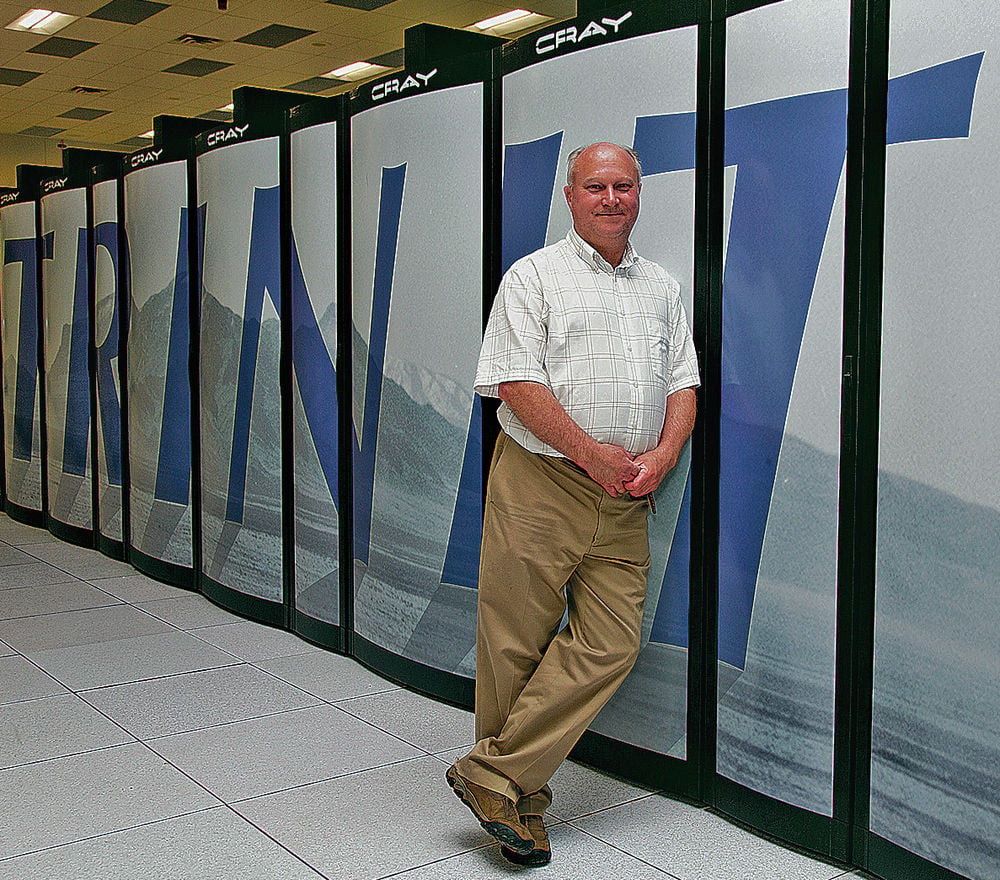
Science on the Hill: Trinity ushers in new age of supercomputing
As the Lab begins testing the second half of its new supercomputer, Trinity, the occasion highlights how intertwined scientific breakthroughs and computer innovations have become — and what a seminal and central role Los Alamos has played in that synergy. - 9/12/16
-

Making solar power more affordable
Although the goal of cheap, plentiful energy from the sun turns out to be a work in progress, not a settled achievement, recent research breakthroughs are helping to deliver on the promise of truly “cheap solar,” with several surprising side benefits. - 8/30/16
-

Science on the Hill: Something new under the sun
Recent research breakthroughs at Los Alamos National Laboratory are helping to deliver on the promise of truly “cheap solar,” with several surprising side benefits. - 8/4/16
-

Confessions of a Martian rock
When scientists analyzed the chemical make-up of a Martian rock, they expected to find lots of basalt, the building block of all planets. - 7/25/16
-

Science on the Hill: On track for a clean, hydrogen-powered future
Los Alamos, within the ElectroCat consortium, is investigating less expensive, more abundant materials based on carbon compounds to reduce the cost of ownership of a fuel-cell powered car so this clean power can compete in the marketplace. - 10/13/16
-

Science on the Hill: Burning questions in study of wildfire
Understanding what drives big fires and predicting their behavior helps the fire community prepare for the next blaze through appropriate land management, emergency plans and firefighting strategies. - 7/12/16
-

Could we someday predict earthquakes?
New ways of looking at seismic information and innovative laboratory experiments are offering tantalizing clues to what triggers earthquakes—and when. - 6/27/16
-

Science on the Hill: Fragile life underfoot has big impact on desert
The survival of desert biocrusts is being challenged by threats from climate change and man-made disturbance. - 6/13/16
-

Using supercomputers to probe the early universe
Los Alamos researchers developed a computer code, called BURST, that can simulate a slice in the life of our young cosmos. - 6/5/16
-
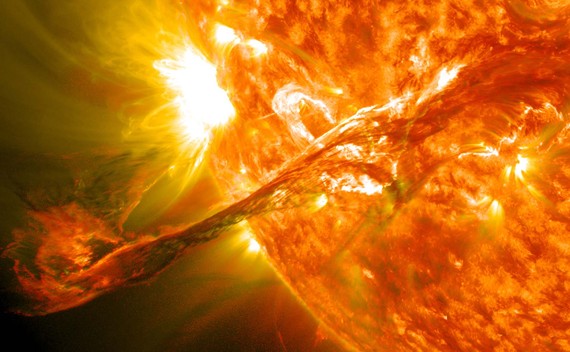
The space weather threat... and how we protect ourselves
The Sun continually ejects high-energy electrons, protons, and other nuclei that bombard the Earth, producing space-weather effects such as the beautiful northern lights but also others that can destroy satellites and disrupt our lives here on Earth. - 4/24/16
-

Why Mars?
The allure (and challenge) of colonizing the red planet - 5/17/16
-

A revolution in supercomputing is coming
Trinity is a 42-petaflop supercomputer (that’s one quadrillion floating point operations per second, in case you’re counting) that resides at Los Alamos National Laboratory and can perform complex 3D simulations of everything from ocean currents to asteroid impacts. - 9/20/16
-

Science on the Hill: Gravitational waves open new window on universe
Viewing the very large and very small workings of what's out there. - 5/8/16
-

Science on the Hill: Why space weather matters
Many people think of space as a silent, empty void and the sun as a distant source of light and heat. Not true. The sun and the Earth are connected in complex, intimate and sometimes dangerous ways. - 4/10/16
-

Bringing MRI where it’s needed most
Los Alamos scientists developed a portable MRI, also called Battlefield MRI that uses ultra-low-field magnetic resonance imaging to create images of the brain that can be used in field hospitals for wounded soldiers or in remote villages in developing countries. - 3/20/16
-

Science on the Hill: Can we someday predict earthquakes?
New ways of looking at seismic information and innovative laboratory experiments are offering tantalizing clues to what triggers earthquakes — and when. - 3/14/16
-

Bracing for fire?
Understanding what drives big fires and predicting their behavior helps the fire community prepare for the next blaze through appropriate land management, emergency plans and firefighting strategies. - 7/20/16
-

Why is Zika now a threat?
Population growth, rising temperatures, embryonic immune systems says Lab scientist - 2/25/16
-

Keeping nuclear materials secure in an uncertain world
During the last year, the Iran nuclear deal has successfully rolled back Iran’s nuclear program. Los Alamos National Laboratory was integral to verification and training. - 10/24/16
-

Decoding dark matter in genes
Possible future applications, for example, include making new cancer therapies based on how ribosomes differentiate in healthy versus cancerous tissue. - 2/19/16
-

Science on the Hill: Turning windows into solar panels
Working with quantum dots, researchers achieve a breakthrough in solar-concentrating technology that can turn windows into electric generators. - 2/7/16
-

Driving toward an algae-powered future
A project led by Los Alamos seeks to drive algal biofuels to marketability, decreasing our nation’s dependence on fossil fuels and putting the brakes on global warming. - 12/24/15
-

Science on the Hill: The forecast calls for flu
Using mathematics, computer programs, statistics and information about how disease develops and spreads, a research team at Los Alamos National Laboratory found a way to forecast the flu season and even next week’s sickness trends. - 1/15/16
-

Science on the Hill: Driving toward an algae-powered future
A new research project led by Los Alamos National Laboratory seeks to drive algal biofuels to marketability, decreasing our nation’s dependence on fossil fuels and putting the brakes on global warming. - 12/24/15
-

Science on the Hill: Quenching New Mexico's thirst with brackish water
Whether today turns out damp or dry, drought is a fact of life in New Mexico. So where can we get more water? - 11/15/15
-

Science on the Hill: Jumpstarting the carbon capture industry
Carbon capture, utilization, and storage can provide a crucial bridge between our current global energy economy and a cleaner, more diversified energy future. - 10/16/15
-

Science on the Hill: For cybersecurity, in quantum encryption we trust
Los Alamos physicists developed a quantum random number generator and communication system that exploits quantum physics to improve cybersecurity. - 9/13/15
-

Science on the Hill: Portable MRI might make the world a better place
Los Alamos' Battlefield MRI uses ultra-low-field magnetic resonance imaging to create images of the brain that can be used in field hospitals or in remote villages. - 8/9/15
-

Science on the Hill: Fires set to clear African land are stoking climate change
Each year in the dry season, flames sweep across a large swath of the African countryside, engulfing every kind of grass and woody plant in their way. - 11/14/16
-

Science on the Hill: Methane cloud hunting
Los Alamos researchers go hunting for methane gas over the Four Corners area of northwest New Mexico and find a strange daily pattern. - 7/12/15
-

Science on the Hill: Rapid diagnosis a new weapon against re-emerging TB
Researchers at Los Alamos National Laboratory have developed an innovative tool set for the early and accurate diagnosis of tuberculosis. - 6/7/15





